
Jan 24, 2019 | Advocacy & Policy, News
Eat Smart Move More South Carolina (ESMMSC) is conducting a study of our state legislators to examine their perceptions of the relative importance of different public health issues. You can play a key role in helping us by emailing your legislators today and asking them to complete our short survey. Our goal is to get 30-40 legislators to respond.
This is ESMMSC’s first call to action over the coming months. We look forward to working with you to make the healthy choice the easy choice. If you have any questions or concerns, please don’t hesitate to contact Phil Ford, Manager of Policy, Advocacy, and Community Support at phil@eatsmartmovemoresc.org.
3 Easy Steps to Take Action
1. Find your legislators on the SC State House website.
2. Email your legislators through the SC State House website.
3. Copy and paste our message into the online form:
Dear Legislator:
Please complete the public health survey that was sent to you earlier this month from Eat Smart Move More South Carolina (ESMMSC), a nonpartisan and nonprofit organization that is working across SC to make the healthy choice the easy choice.
ESMMSC and partners will be using the information to develop district-specific educational materials to aid in your decision making as it relates to your district’s public health interests.
I have included the questionnaire link below. The questionnaire takes approximately five minutes to complete. All of the information you provide will be maintained securely. If you are willing to sign the survey, it will allow for more district-specific resources to be gathered and prepared for your use.
https://www.surveymonkey.com/r/3YCXXBS
Sincerely,
(Your Name)
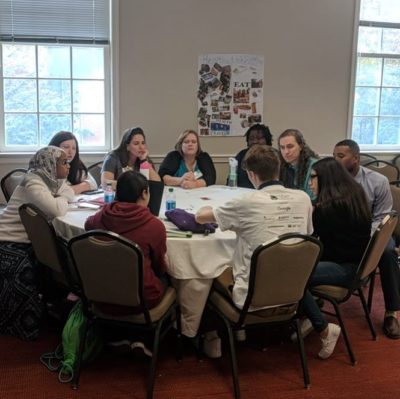
Nov 20, 2018 | News
 Many organizations across the United States view youth engagement as an important tool for advancing social change, developing youth skills, and teaching youth to become grassroots advocates. The HYPE Project caught the attention of the National 4-H Council and was incorporated into their annual conference in Chevy Chase, Maryland this year.
Many organizations across the United States view youth engagement as an important tool for advancing social change, developing youth skills, and teaching youth to become grassroots advocates. The HYPE Project caught the attention of the National 4-H Council and was incorporated into their annual conference in Chevy Chase, Maryland this year.
Eat Smart Move More South Carolina’s (ESMMSC) Trimease Carter and Kelsey Allen traveled to the Walmart 4-H Healthy Habits training on November 1-3 to teach youth and adults the first two phases of the HYPE Project curriculum. More than 120 4-H youth and adult leaders from 34 states and US territories learned about health disparities, community access, and policy, systems, and environmental (PSE) change.
According to JoAnne Leatherman, Program Director of Foundations and Healthy Living at the National 4-H Council, they wanted to partner with ESMMSC after attending the 2017 HYPE Project training in Kansas City, Missouri. “ESMMSC’s youth-adult partnerships work to change community health aligned with 4-H’s mission, but 4-H has been focused on the change within the individual rather than PSE change. The HYPE Project curriculum brought in a new element while reinforcing youth-adult partnerships.”
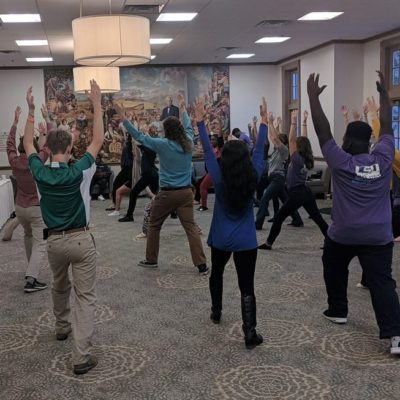 4-H youth and their adult leaders spent two days learning about healthy eating, active living, and the PSE change process. In the Think Phase, they were engaged in the critical thinking process to think beyond the individual level and consider the impacts of community and environmental influences on health. In the Learn Phase, they learned what it means to be a champion for change, how to work with the media, and how to plan a HYPE project.
4-H youth and their adult leaders spent two days learning about healthy eating, active living, and the PSE change process. In the Think Phase, they were engaged in the critical thinking process to think beyond the individual level and consider the impacts of community and environmental influences on health. In the Learn Phase, they learned what it means to be a champion for change, how to work with the media, and how to plan a HYPE project.
“When I don’t see teens on their phones, I know we have been successful. This training was lively, engaging, and impactful,” said Leatherman.
Many attendees indicated they plan to use the information they learned by incorporating it into their current programming, discussing community health issues, and implementing PSE projects. Based on conversations and evaluations, youth are interested in PSE changes like creating community gardens.
“I’m looking forward to an ongoing partnership with the National 4-H Council. The opportunities associated with this group will be beneficial to both of our organizations,” said Trimease Carter, Youth Engagement Manager at ESMMSC.
Carter is planning to return to Chevy Chase, Maryland in February at the 4-H National Conference to share additional information on the HYPE Project and policy, systems, and environmental changes.
To learn more about The HYPE Project, visit www.esmmsc.org.

Nov 19, 2018 | Impact, News
 Eat Smart Move More South Carolina has approved nine grants in its first Let’s Go! 3.0 grant cycle to community coalitions seeking to provide residents with access to local healthy options.
Eat Smart Move More South Carolina has approved nine grants in its first Let’s Go! 3.0 grant cycle to community coalitions seeking to provide residents with access to local healthy options.
Eat Smart Move More Allendale County is reactivating the Allendale County Healthy Young People Empowerment (HYPE) Project Team to plan, create, and promote a safe walking path that will allow Town of Allendale residents to access the local grocery store and farmer’s market. Youth will educate and mobilize other youth to become engaged in the pedestrian planning process and to advocate for social changes that are necessary to have the citizens of Allendale County make active living a priority in their lives.
Tri-County Health Network in Orangeburg is partnering with South Carolina State University and the Regional Medical Center to create two self-sustaining, organic community gardens. The gardens will continue the momentum and success of five establish school gardens and fight food deserts. Produce will be given to patients of a local pharmacy and used in the Regional Medical Center’s Diabetes Prevention Program cooking class.
Eat Smart Move More Richland County is revitalizing and enhancing two parks in Columbia – Crane Creek Park and Lorick Park. Fun Fitness Station stencils will be painted on walking tracks, making walking more interactive and fun. Health events will be hosted at the parks to educate neighborhood residents and community centers on the importance of physical activity and to encourage them to use the revitalized parks.
Eat Smart Move More Kershaw County is increasing access to the Kershaw County Farmer’s Market by creating way-finding signage. The market relocated to downtown Camden, and the signage will help residents and visitors find the market.
Eat Smart Move More Barnwell County is building a disc golf course in the Town of Williston. Residents indicated a need for family-friendly physical activity resources in the town. In addition, the Healthy Young People Empowerment (HYPE) Project Team will make improvements to walking tracks in the towns of Williston and Blackville by cleaning up the areas, painting lines, and landscaping. They will also advocate for an open community policy at the Williston walking track, and clean up the Williston-Elko Middle School playground.
The Alliance Collaborative in Horry County is working with the Horry County School District to adopt and implement the South Carolina School Boards Association’s model policy for open community use. The policy allows community residents to use outdoor playgrounds, tracks, courts and other outdoor recreational facilities located on school property.
Eat Smart Move More Anderson County is working with the Healthy Young People Empowerment (HYPE) Project Team to continue making Equinox Park in Anderson accessible to all residents, especially those with disabilities and special needs. Youth will help create a play space where all ages and abilities can play, learn, and explore the outdoors together, and interact with one another. The HYPE team will add two interactive sensory play panels installed at an appropriate height for wheelchair accessibility. The panels will be located near the Born Learning Trail and a shelter that will have an inclusive picnic table, grill, a solid paved pad with an access path.
Partners for Active Living in Spartanburg is installing a water bottle refilling station and drinking fountain at the trailhead of the River Birch Trail. The bottle filling station will be located on the edge of Spartanburg School District 7 property and will also serve community members visiting or using nearby athletic fields that are open to the public during non-school hours. The station features a convenient way to grab tap water to go and includes a handicapped-accessible fountain, as well as a ground-level drinking fountain for dogs.
Shady Grove Baptist Church in Greenville is fighting food deserts by expanding and enhancing an existing community garden to provide fresh produce for older members of the church, church members having financial problems, and those in need in the community.
ESMMSC will be awarding more community grants over the next two-and-a-half years to help community coalitions in South Carolina identify and address barriers to healthy eating and active living. In January and July of each year, coalitions will be able to apply for mini-grants to fund small-scale projects. The grants are made possible through funding by The BlueCross® BlueShield® of South Carolina Foundation, an independent licensee of the Blue Cross and Blue Shield Association.
For more information about the Let’s Go 3.0 initiative, visit www.eatsmartmovemoresc.org. To find healthy resources in your community, visit www.letsgosc.org.
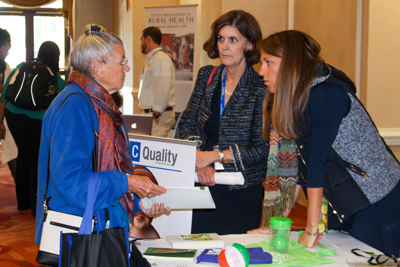
Nov 19, 2018 | News
 This was the mantra for the Summit Planning Committee this year, when they agreed to move the summit from Columbia to a new location. The reason for this decision is that Eat Smart Move More South Carolina is a statewide organization, and that training opportunities, including the summit, should be offered throughout the state. Spartanburg was selected for the 2018 Leadership Summit for Healthy Communities. Over 200 healthy eating and active living specialists and community coalition members around South Carolina and North Carolina attended this year. They had opportunities to network and learn about strategies to improve access to fresh foods and safe places for physical activity.
This was the mantra for the Summit Planning Committee this year, when they agreed to move the summit from Columbia to a new location. The reason for this decision is that Eat Smart Move More South Carolina is a statewide organization, and that training opportunities, including the summit, should be offered throughout the state. Spartanburg was selected for the 2018 Leadership Summit for Healthy Communities. Over 200 healthy eating and active living specialists and community coalition members around South Carolina and North Carolina attended this year. They had opportunities to network and learn about strategies to improve access to fresh foods and safe places for physical activity.
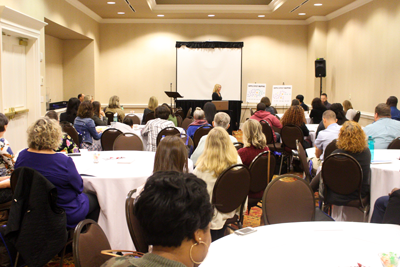
“Spartanburg seemed like the perfect place for this year’s Leadership Summit, because this community demonstrates a commitment to healthy eating and active living in communities, schools, worksites and churches, through initiatives like Way to Wellville,” said Beth Franco, Executive Director of Eat Smart Move More South Carolina. “Hosting the event in Spartanburg just seemed right.”
Based on the feedback, many participants appreciated the opportunities to network and to learn about what other communities were doing. One participant said, “In additional to the wonderful information, there is a tremendous amount of energy generated by this conference that in turn energizes me to go back to my community and continue working hard to improve the health and wellness of my town.”
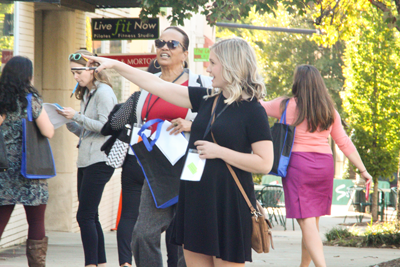 Fran Butterfoss, President of Coalitions Work; Dr. Darryl Owings, Superintendent of Spartanburg School District Six; and Christina Cody, South Carolina’s first Robert Wood Johnson Foundation Culture of Health Leader, served as keynotes speakers over the two-day Summit.
Fran Butterfoss, President of Coalitions Work; Dr. Darryl Owings, Superintendent of Spartanburg School District Six; and Christina Cody, South Carolina’s first Robert Wood Johnson Foundation Culture of Health Leader, served as keynotes speakers over the two-day Summit.
One of the highlights for participants was Dr. Darryl Owings’ presentation on Spartanburg District Six Farm to School program. Dr. 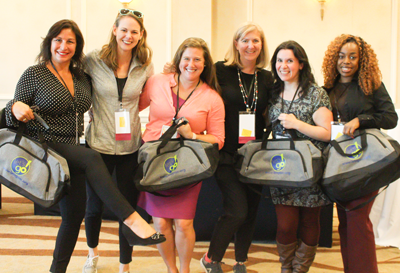 Owings spoke about how his vision of providing students with healthy food options in school meals led to the creation of a district-run farm that produces organic fruits and vegetables for the schools year round. The school district partners with Cragmoor Farms to manage a 49-acre farm in Roebuck, SC that produces enough fresh fruits and vegetables to feed students in the district. In addition to providing educational opportunities on the farm and in the classroom, the district hosts a farmer’s market to provide the community with access to organic produce as well. Dr. Owings emphasized the importance of partnership as key to the success of this initiative.
Owings spoke about how his vision of providing students with healthy food options in school meals led to the creation of a district-run farm that produces organic fruits and vegetables for the schools year round. The school district partners with Cragmoor Farms to manage a 49-acre farm in Roebuck, SC that produces enough fresh fruits and vegetables to feed students in the district. In addition to providing educational opportunities on the farm and in the classroom, the district hosts a farmer’s market to provide the community with access to organic produce as well. Dr. Owings emphasized the importance of partnership as key to the success of this initiative.
“Dr. Owings had an amazing story to share, and hopefully with inspire other communities to realize that starting with a vision and building a plan and partnerships can lead to sustainable and exciting change.” said Franco.
 Christina Cody, was another keynote speaker that was popular with participants. Christina is a Wellness Coordinator at the Cherokee School District, was recognized as South Carolina’s first Culture of Health Leader that is sponsored by the Robert Wood Johnson Foundation. The Culture of Healthy Leader program is a competitive leadership development opportunity for people working in every field and profession who want to use their influence to advance health and equity.
Christina Cody, was another keynote speaker that was popular with participants. Christina is a Wellness Coordinator at the Cherokee School District, was recognized as South Carolina’s first Culture of Health Leader that is sponsored by the Robert Wood Johnson Foundation. The Culture of Healthy Leader program is a competitive leadership development opportunity for people working in every field and profession who want to use their influence to advance health and equity.
Christina shared, “Applications for the Robert Wood Johnson Foundation Culture of Health Leader program will be open in January for anyone interested in applying. This program is top-notch and is so rewarding. I would be honored to have another South Carolinian to work with on this venture.”
In addition to the keynote speakers and 20 breakout sessions, there were opportunities for everyone to be physically active. Christina Cody led us in Squat Karaoke after lunch again this year! There was also a Scavenger Hunt through downtown Spartanburg, and Yoga.
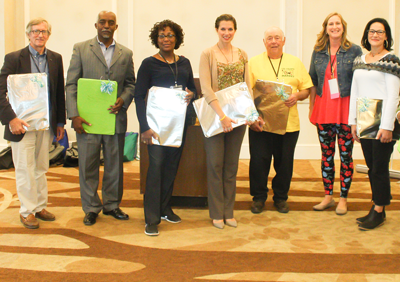 On Monday, ESMMSC hosted a reception to honor 12 local leaders who were nominated by their colleagues and recognized throughout the year with our Local Leadership Profile. These individuals included a legislator, health worker, and a farmer. Congratulations to these individuals and thank you for your service!
On Monday, ESMMSC hosted a reception to honor 12 local leaders who were nominated by their colleagues and recognized throughout the year with our Local Leadership Profile. These individuals included a legislator, health worker, and a farmer. Congratulations to these individuals and thank you for your service!
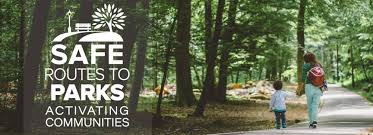
Nov 8, 2018 | News

The Safe Routes to Parks Activating Communities program is now accepting applications for awards for eleven grantee communities in 2019. The Safe Routes to Parks Activating Communities program provides tailored technical assistance for eleven communities to develop Safe Routes to Parks action plans and awards $12,500 to each community to begin implementation of those plans. Applications are due by 11:59 PM PT on December 10th, 2018.
Read the details here!
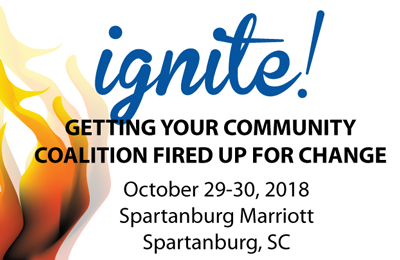
Oct 9, 2018 | News
 Continuing education is an important part of any professional’s career and the work they do. Not only do CEUs help keep accreditations current, but they also keep you in the know about the most current practices in your field. The Leadership Summit Planning Committee always keeps CEUs in the forefront. This year, the Leadership Summit has been approved for the following CEU accreditations: Dietitians, Social Workers, and Educators. Planners and CHES/MCHES CEUs are still pending approval by the appropriate governing organizations.
Continuing education is an important part of any professional’s career and the work they do. Not only do CEUs help keep accreditations current, but they also keep you in the know about the most current practices in your field. The Leadership Summit Planning Committee always keeps CEUs in the forefront. This year, the Leadership Summit has been approved for the following CEU accreditations: Dietitians, Social Workers, and Educators. Planners and CHES/MCHES CEUs are still pending approval by the appropriate governing organizations.
Dieticians and Educators
Participants may receive RD/RDN/DTR/NDTR CEUs for up to eight hours based on the Summit sessions that are attended.
Educators can get up to eight CEU hours based on the Summit sessions that are attended. Participation certificates will be provided for those seeking credits for renewal of their SC professional educator certification. Credits are subject to the approval of the participant’s educational district or entity. In order to receive renewal credits via this option, the educator must provide:
- The training objectives and/or training outline
- A certificate or other official documentation verifying successful completion of the training program, including the date(s) and the number of hours of direct participation
The allotted hours for Dietitians and Educators are as follows:
October 29, 2018
- 2 hours for pre-conference workshop
- 1 hour for keynote session (Fran Butterfoss)
- 1 hour for concurrent session one
- 1 hour for concurrent session two
October 30, 2018
- 1 hour for keynote session (Christina Cody and Darryl Owings)
- 1 hour for concurrent session one
- 1 hour for concurrent session two
Social Workers
Participants may receive CEUs for up to eight hours based on the Summit sessions that are attended. Four Summit sessions led by a MSW/LMSW qualify for Social Work CEUs. See allotted hours below:
October 29, 2018
- 2 hours for pre-conference workshop
- 1 hour for keynote session (Fran Butterfoss)
- 1 hour for concurrent session one
- 1 hour for concurrent session two
October 30, 2018
- 1 hour for keynote session (Christina Cody and Darryl Owings)
- 1 hour for concurrent session one
- 1 hour for concurrent session two
Sessions Qualifying as Social Work CEUs:
- Follow the App! From Application to Appetizer: Increasing Resource Access and Promoting Healthy Eating Among SNAP Recipients
Liz Walsh, LMSW, SC Thrive; Beverly Wilson, MPH, Foodshare; and Dan Weidenbenner, Mill Village Farms
- Identifying: Addressing Food Insecurity in a Higher Ed Setting
Jackie Knight Wilt, MPH, CHES and Dianna Colvin, MPH, MSW, CHES; Healthy Carolina, USC
- Reclaiming and Rebuilding Your Built Environment
Amy Johnson-Ely and Corrine Reed, MSW; Palmetto Cycling Coalition
- Race Equity and Inclusion: Creating a Diverse and Inclusive Culture within Your Community Coalition
Chynna A. Phillips, MSW, MPH, Sisters of Charity Foundation; Trimease K. Carter, MSW, ESMMSC; Jennifer Gunter, PhD, SC Collaborative of Race and Reconciliation; and Saundra A. Ligon, SC Human Affairs Commission
CHES/MCHES
Eat Smart Move More South Carolina has applied for CEUs through the appropriate governing organization. We are confident that all Leadership Summit sessions will be approved once again.
To get CEU credit, you must be registered for the Leadership Summit for Healthy Communities. Upon arriving at the registration desk, you will be directed to a CEU table where you will complete a sign-in sheet using your name, email address, and other required identifiable information. Following the Leadership Summit, you will receive appropriate documentation via email.
If you haven’t reregistered for the Leadership Summit, click here! Early bird registration ends Friday, October 12.

Sep 21, 2018 | News

Some of American’s healthiest schools are in South Carolina. Twenty-five schools were among a total 461 recognized recently as “America’s Healthiest Schools” by the Alliance for a Healthier Generation, a national organization that empowers kids to develop lifelong, healthy habits.
The schools earned the distinction by successfully meeting a rigorous set of criteria for serving healthier meals and snacks, getting students moving more, offering high-quality health and physical education, and empowering school leaders to be healthy role models.
South Carolina’s healthiest schools are:
Anderson School District 4
Pe
ndleton Elementary School
Pendleton High School
Riverside Middle School
Townville Elementary School
Berkeley County School District
Sangaree Elementary School
Dorchester County School District 2
Alston Middle School
Lexington County School District 1
Midway Elementary School
Newberry County School District
Newberry Middle School
Mid-Carolina Middle School
Richland County School District 1
Bradley Elementary School
Brockman Elementary School
Caughman Road Elementary School
Dreher High School
Eau Claire High School
J.P. Thomas Elementary
Logan Elementary School
Rosewood Elementary School
Satchel Ford Elementary School
W.G. Sanders Middle School
Watkins Nance Elementary School
Hopkins Middle School
Lower Richland High School
Southeast Middle School
Spartanburg School District 3
Cowpens Elementary School
All of the award-winning, meet or exceed federal nutrition standards for school meals and snacks, offer breakfast daily, implement district wellness policies and update progress annually, and provide students with at least 60 minutes of physical education per week and ensure physical activity throughout the school day.
To view the complete list of America’s Healthiest Schools visit HealthiestSchools.org.

Sep 11, 2018 | News
 Jump start your Leadership Summit experience by attending one of two pre-conference workshops that will arm you with tools, information, and inspiration to ignite your community’s healthy eating and active living strategies. The best part about the pre-conference workshops is that they’re a bonus and included in the cost of registration!
Jump start your Leadership Summit experience by attending one of two pre-conference workshops that will arm you with tools, information, and inspiration to ignite your community’s healthy eating and active living strategies. The best part about the pre-conference workshops is that they’re a bonus and included in the cost of registration!
Our friends at ALTA Planning + Design in Greenville are providing you with an opportunity to learn more about inspiring your community to help sustain a culture of physical activity. We all know that physical activity is an important part of healthy lifestyles. That’s why we work hard to ensure all community members have access to safe places for physical activity, whether it be through wayfinding signs, sidewalk improvements, bike lane additions, or any other component of making the environment safer.
John Cock with ALTA Planning + Design will make you think about what it takes to inspire and sustain a culture of physical activity. He will use his experience designing, developing, and implementing biking and walking programs and share what it takes to develop local bike/walk programs, how to identify and engage community volunteers in the launch of programs, and strategies for evaluating program success. He will engage you in a discussion about the role of various community partners, including health department staff, advocates, local government staff, school district staff, and others.
While some will attend the ALTA Planning + Design workshop, others will be learning about Live Healthy South Carolina. Our partners at the South Carolina Department of Health and Environmental Control (SCDHEC) will dive into a new initiative in partnership with the Alliance for a Healthier South Carolina that focuses on improving the health of every South Carolinian.
In our work, we realize that we can’t accomplish our goals alone. It takes a team of partners and a lot of collaboration to reinforce our message of making the healthy choice, the easy choice. SCDHEC and the Alliance for a Healthier South Carolina have joined forces to created Live Healthy South Carolina: The South Carolina State Health Improvement Plan. SCDHEC’s Barbara Grice and Suzanne Sanders will educate you on the first statewide health assessment and improvement plan and how you can use this tool to guide your community work. It’s a framework for building partnerships across healthcare, public health, and community sectors, sharing data to establish priorities for health improvement, and aligning resources whenever possible.
When you choose to attend the Leadership Summit for Healthy Communities, October 29-30, at the Spartanburg Marriott, please make sure you choose one of our pre-conference workshops. Remember, they’re included in the cost of registration. Register today!
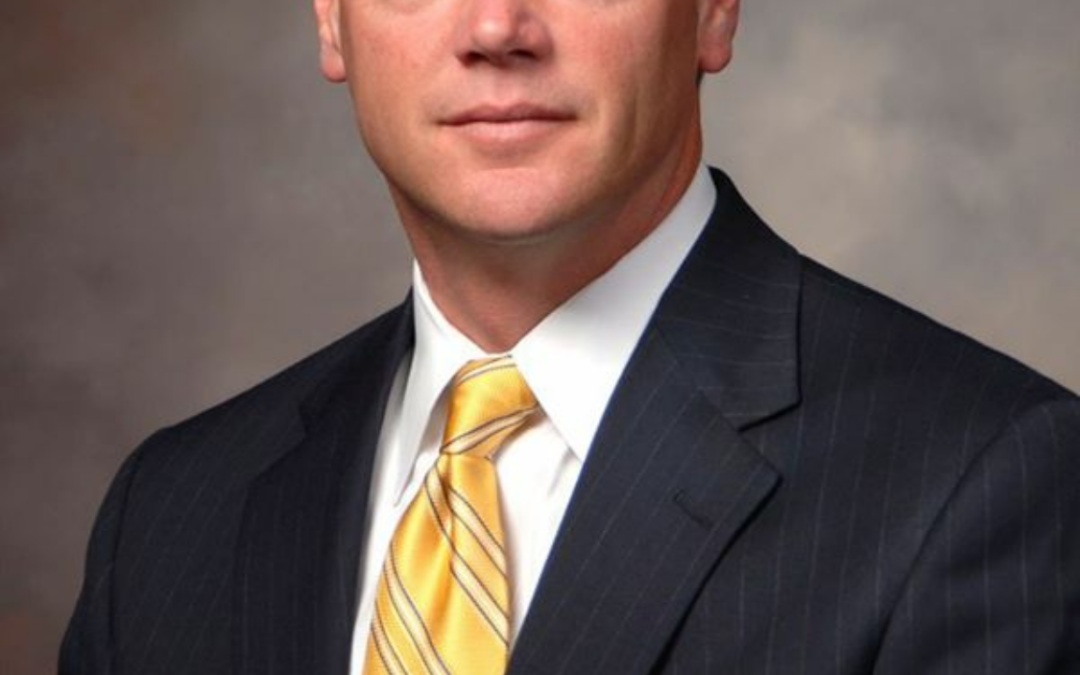
Aug 30, 2018 | News
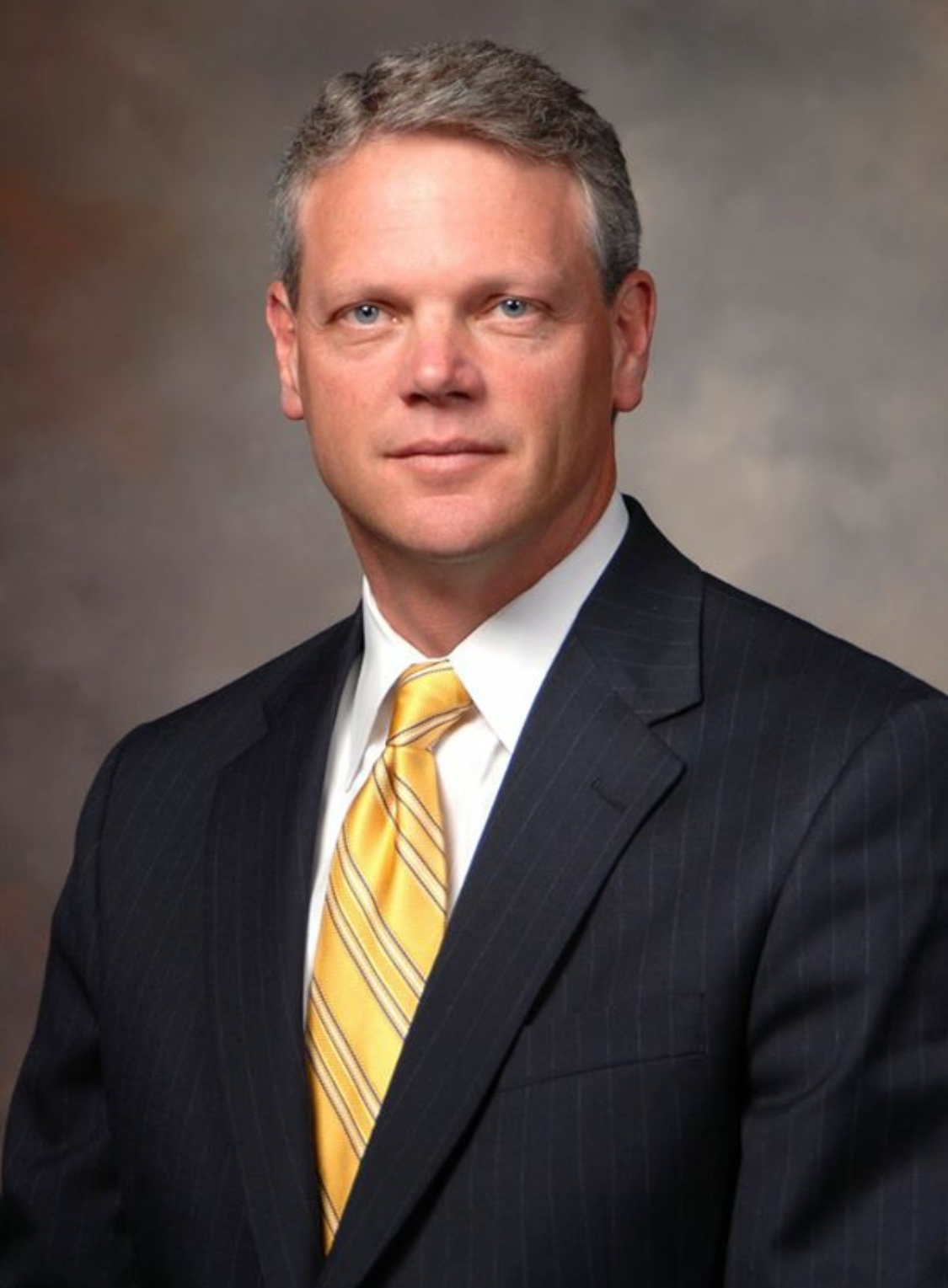 Over the years, research has told us that good nutrition, and physical activity leads to healthy students, good grades, and improved classroom performance. It’s part of the culture of health mission we all seek. And Spartanburg School District Six is leading the way in school nutrition through its Farm to School program and its very own farm.
Over the years, research has told us that good nutrition, and physical activity leads to healthy students, good grades, and improved classroom performance. It’s part of the culture of health mission we all seek. And Spartanburg School District Six is leading the way in school nutrition through its Farm to School program and its very own farm.
Superintendent Dr. Darryl Owings has been on a mission to provide the more than 10,000 students in District Six with organic fruits and vegetables at meals and hands-on agriculture education opportunities. He has led a farm Initiative, in partnership with Spartanburg County Foundation, Upstate Forever, and Cragmoor Farms, to provide locally grown produce as an alternative to precooked meals. The farm is a 49-acre tract of land in Roebuck, SC that produces enough fresh fruits and vegetables to feed students in the district. They even host a farmer’s market for the community.
District Six students are actively involved in the growing process from germinating seeds in the greenhouse, transplanting the seedlings into the garden, and harvesting the fruits and vegetables for the schools and the community. Some students work on the farm while others learn with gardens and greenhouses at their schools. Some of the produce they’ve planted include cabbage, cauliflower, broccoli, onions, carrots, tomatoes, zucchini, squash, and watermelon.
One of the first steps Dr. Owings took to achieve his goal was to cancel the district contract with a major school food service company. He had to hire cafeteria employees, who went through culinary training to learn new methods of cooking and recipes utilizing the fresh produce. After years of heating up processed, frozen, and canned foods, the district has returned to cooking scratch-made and healthy meals that benefit their students’ health.
Dr. Darryl Owings will be one of three keynotes speakers at the Leadership Summit for Healthy Communities, October 29-30, at the Spartanburg Marriott. He’ll give insight into how his district was able to make impactful changes to the school cafeteria and classroom. Catch his address on Tuesday, October 30 in Spartanburg.
Registration for the Leadership Summit for Healthy Communities is open!




 4-H youth and their adult leaders spent two days learning about healthy eating, active living, and the PSE change process. In the Think Phase, they were engaged in the critical thinking process to think beyond the individual level and consider the impacts of community and environmental influences on health. In the Learn Phase, they learned what it means to be a champion for change, how to work with the media, and how to plan a HYPE project.
4-H youth and their adult leaders spent two days learning about healthy eating, active living, and the PSE change process. In the Think Phase, they were engaged in the critical thinking process to think beyond the individual level and consider the impacts of community and environmental influences on health. In the Learn Phase, they learned what it means to be a champion for change, how to work with the media, and how to plan a HYPE project.


 Fran Butterfoss, President of Coalitions Work; Dr. Darryl Owings, Superintendent of Spartanburg School District Six; and Christina Cody, South Carolina’s first Robert Wood Johnson Foundation Culture of Health Leader, served as keynotes speakers over the two-day Summit.
Fran Butterfoss, President of Coalitions Work; Dr. Darryl Owings, Superintendent of Spartanburg School District Six; and Christina Cody, South Carolina’s first Robert Wood Johnson Foundation Culture of Health Leader, served as keynotes speakers over the two-day Summit. Owings spoke about how his vision of providing students with healthy food options in school meals led to the creation of a district-run farm that produces organic fruits and vegetables for the schools year round. The school district partners with Cragmoor Farms to manage a 49-acre farm in Roebuck, SC that produces enough fresh fruits and vegetables to feed students in the district. In addition to providing educational opportunities on the farm and in the classroom, the district hosts a farmer’s market to provide the community with access to organic produce as well. Dr. Owings emphasized the importance of partnership as key to the success of this initiative.
Owings spoke about how his vision of providing students with healthy food options in school meals led to the creation of a district-run farm that produces organic fruits and vegetables for the schools year round. The school district partners with Cragmoor Farms to manage a 49-acre farm in Roebuck, SC that produces enough fresh fruits and vegetables to feed students in the district. In addition to providing educational opportunities on the farm and in the classroom, the district hosts a farmer’s market to provide the community with access to organic produce as well. Dr. Owings emphasized the importance of partnership as key to the success of this initiative. Christina Cody, was another keynote speaker that was popular with participants. Christina is a Wellness Coordinator at the Cherokee School District, was recognized as South Carolina’s first Culture of Health Leader that is sponsored by the Robert Wood Johnson Foundation. The Culture of Healthy Leader program is a competitive leadership development opportunity for people working in every field and profession who want to use their influence to advance health and equity.
Christina Cody, was another keynote speaker that was popular with participants. Christina is a Wellness Coordinator at the Cherokee School District, was recognized as South Carolina’s first Culture of Health Leader that is sponsored by the Robert Wood Johnson Foundation. The Culture of Healthy Leader program is a competitive leadership development opportunity for people working in every field and profession who want to use their influence to advance health and equity. On Monday, ESMMSC hosted a reception to honor 12 local leaders who were nominated by their colleagues and recognized throughout the year with our Local Leadership Profile. These individuals included a legislator, health worker, and a farmer. Congratulations to these individuals and thank you for your service!
On Monday, ESMMSC hosted a reception to honor 12 local leaders who were nominated by their colleagues and recognized throughout the year with our Local Leadership Profile. These individuals included a legislator, health worker, and a farmer. Congratulations to these individuals and thank you for your service!



 Over the years, research has told us that good nutrition, and physical activity leads to healthy students, good grades, and improved classroom performance. It’s part of the culture of health mission we all seek. And Spartanburg School District Six is leading the way in school nutrition through its Farm to School program and its very own farm.
Over the years, research has told us that good nutrition, and physical activity leads to healthy students, good grades, and improved classroom performance. It’s part of the culture of health mission we all seek. And Spartanburg School District Six is leading the way in school nutrition through its Farm to School program and its very own farm.